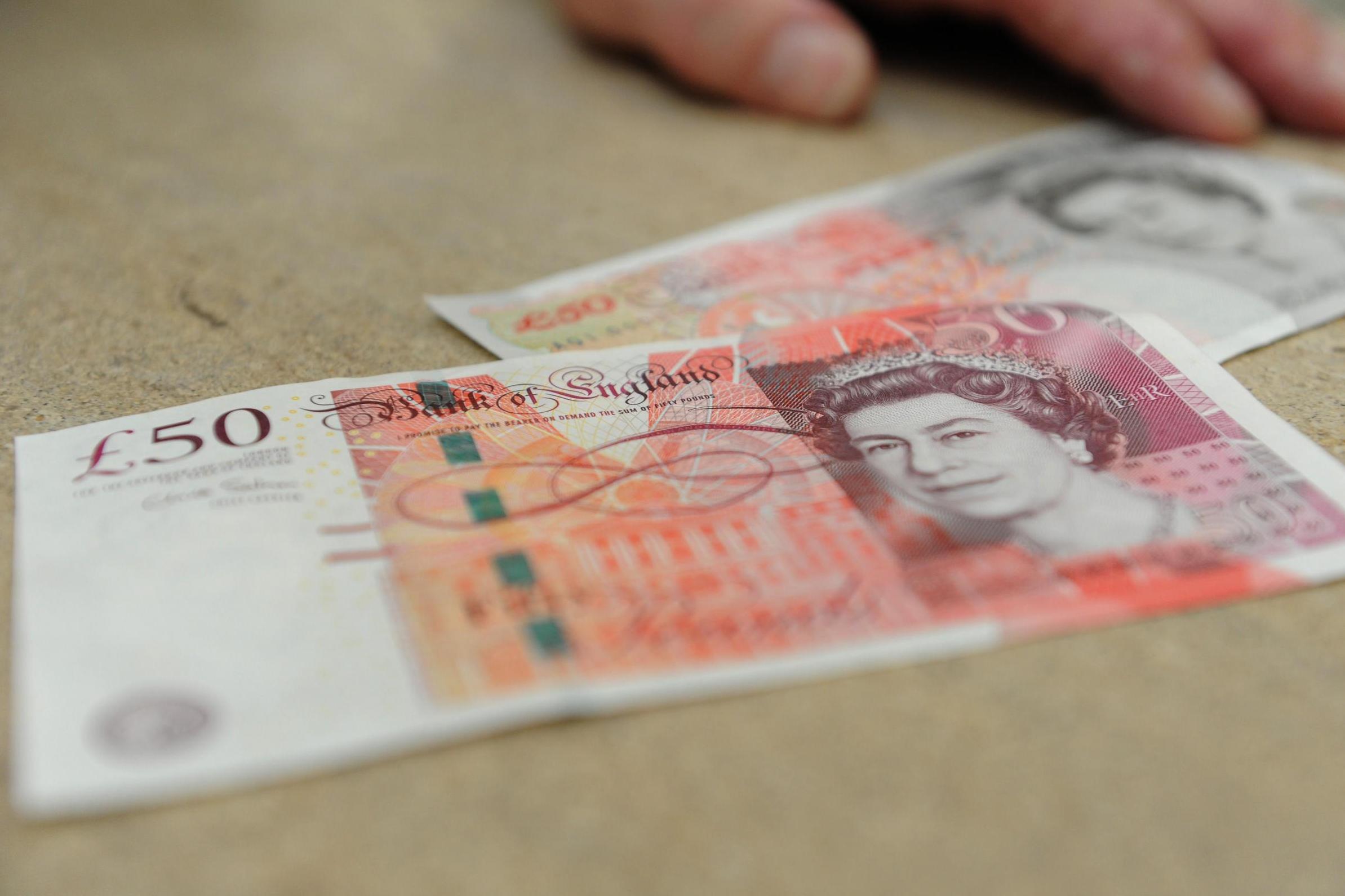AGXStarseed
Well-Known Member
(Not written by me)
Suggestions as to who should grace the front of the new £50 range from Mary Seacole to Gareth Southgate

The £50 note is set to get a plastic redesign, the Bank of England has said (PA Archive/PA Images)
The £50 note is getting a makeover - and you can help choose who features on the front of it.
The highest denomination of banknote will get a plastic redesign like our current £5 and £10 notes, which ministers say will be more durable, secure and harder to make counterfeits from.
The announcement comes after calls to abolish the £50 note altogether, out of fear it was a method of payment widely used by criminals and not for everyday transactions.
In March, the Treasury said: "The £50 note is believed to be rarely used for routine purchases and is instead held as a store of value.
"There is also a perception among some that £50 notes are used for money laundering, hidden economic activity and tax evasion."
First introduced in 1981, there are currently 300 million £50 notes in circulation, with a combined value of £16.5bn.
Here's everything you need to know about the new £50 note, including the favourites to bag the coveted front-cover spot...
When will the new £50 be in circulation?
An exact date hasn't been confirmed, although the Bank of England announced that the new £50 notes would be printed when the new £20 note is rolled out in 2020.
What will the new £50 note be made of?
The new banknote will be made from polymer, the same material used to produce £5 and £10 notes.
Polymer banknotes are more environmentally friendly than paper notes, as well as being more durable and safer.
The Exchequer Secretary to the Treasury, Robert Jenrick, said: "Our coins and notes are respected and recognised the world over and are a key part of the UK's heritage and identity.
"People should have as much choice as possible when it comes to their money, and we're making sure that cash is here to stay.
"Our money needs to be secure and this new note will help prevent crime."
Who is on the current £50 note?
The current £50 note features Matthew Boulton and James Watt, trailblazers of the industrial revolution.
Who will feature on the new £50 note?
Ever since plans for the new £50 note were announced, people have been speculating about who should feature on the front of the note.
The Bank of England has faced calls in recent years to feature more women on banknotes.
Labour MP Wes Streeting has put forward for British-Jamaican nurse Mary Seacole.
When she died, most of her great work in nursing was forgotten - often overshadowed by that of Florence Nightingale - but in 1991, she was posthumously awarded the Jamaican Order of Merit and in 2004, was voted the greatest black Briton.
Mr Streeting said: "Mary Seacole's achievements are too often overlooked in history and yet what she did for soldiers in the Crimean War was an act of great heroism which led to her being voted the greatest black Britain."
As usual, people's imaginations on Twitter have been running wild, with some suggesting Gareth Southgate, Liam Gallagher and Phillip Schofield.
Whoever suggested these will be disappointed, however, because the Bank of England does not feature people who are still living on its banknotes, with the exception of the Queen.
Who decides who will feature on bank notes?
In its selection process, the Bank of England will select characters who reflect the diversity of British society who are widely admired and have made an important contribution to British society and culture.
As of 2014, the Banknote Character Advisory Committee chooses the field it wants to represent and ask the public to nominate people from that field.
For example, in 2015 it was announced that someone from the visual arts would feature on the £20, a character who was eventually unveiled as artists JMW Turner.
The final decision about who will appear on the next banknote is made by the Bank's Governor.
Source: £50 note: Who should be the face of the new banknote?
Suggestions as to who should grace the front of the new £50 range from Mary Seacole to Gareth Southgate

The £50 note is set to get a plastic redesign, the Bank of England has said (PA Archive/PA Images)
The £50 note is getting a makeover - and you can help choose who features on the front of it.
The highest denomination of banknote will get a plastic redesign like our current £5 and £10 notes, which ministers say will be more durable, secure and harder to make counterfeits from.
The announcement comes after calls to abolish the £50 note altogether, out of fear it was a method of payment widely used by criminals and not for everyday transactions.
In March, the Treasury said: "The £50 note is believed to be rarely used for routine purchases and is instead held as a store of value.
"There is also a perception among some that £50 notes are used for money laundering, hidden economic activity and tax evasion."
First introduced in 1981, there are currently 300 million £50 notes in circulation, with a combined value of £16.5bn.
Here's everything you need to know about the new £50 note, including the favourites to bag the coveted front-cover spot...
When will the new £50 be in circulation?
An exact date hasn't been confirmed, although the Bank of England announced that the new £50 notes would be printed when the new £20 note is rolled out in 2020.
What will the new £50 note be made of?
The new banknote will be made from polymer, the same material used to produce £5 and £10 notes.
Polymer banknotes are more environmentally friendly than paper notes, as well as being more durable and safer.
The Exchequer Secretary to the Treasury, Robert Jenrick, said: "Our coins and notes are respected and recognised the world over and are a key part of the UK's heritage and identity.
"People should have as much choice as possible when it comes to their money, and we're making sure that cash is here to stay.
"Our money needs to be secure and this new note will help prevent crime."
Who is on the current £50 note?
The current £50 note features Matthew Boulton and James Watt, trailblazers of the industrial revolution.
Who will feature on the new £50 note?
Ever since plans for the new £50 note were announced, people have been speculating about who should feature on the front of the note.
The Bank of England has faced calls in recent years to feature more women on banknotes.
Labour MP Wes Streeting has put forward for British-Jamaican nurse Mary Seacole.
When she died, most of her great work in nursing was forgotten - often overshadowed by that of Florence Nightingale - but in 1991, she was posthumously awarded the Jamaican Order of Merit and in 2004, was voted the greatest black Briton.
Mr Streeting said: "Mary Seacole's achievements are too often overlooked in history and yet what she did for soldiers in the Crimean War was an act of great heroism which led to her being voted the greatest black Britain."
As usual, people's imaginations on Twitter have been running wild, with some suggesting Gareth Southgate, Liam Gallagher and Phillip Schofield.
Whoever suggested these will be disappointed, however, because the Bank of England does not feature people who are still living on its banknotes, with the exception of the Queen.
Who decides who will feature on bank notes?
In its selection process, the Bank of England will select characters who reflect the diversity of British society who are widely admired and have made an important contribution to British society and culture.
As of 2014, the Banknote Character Advisory Committee chooses the field it wants to represent and ask the public to nominate people from that field.
For example, in 2015 it was announced that someone from the visual arts would feature on the £20, a character who was eventually unveiled as artists JMW Turner.
The final decision about who will appear on the next banknote is made by the Bank's Governor.
Source: £50 note: Who should be the face of the new banknote?



